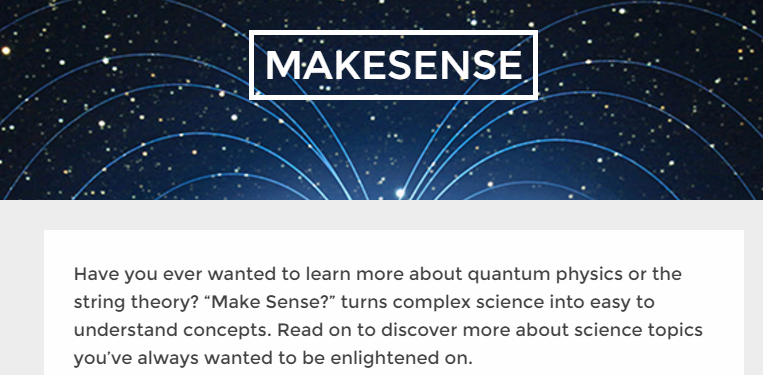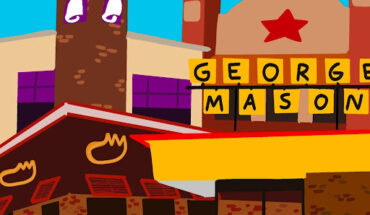Communication students create website “Make Sense” to simplify math and science
BY SARAH BASSIL, STAFF WRITER
In the fall semester of 2016, communication Professor Beth Jannery was tired of hearing that the communication major is easy and other majors such as math and science were much more difficult. She then assigned a project to her undergrad students aimed at challenging that stigma.
Jannery is the director of the journalism program at Mason, which consists of the journalism minor, the sports communication minor and the journalism concentration within the Department of Communication.
The project assigned to her COMM 303: Writing Across the Media class was simple: create a multimedia package that explains science topics that are sometimes difficult for most students to understand. Students in her class, made up of Journalism and Public Relations concentrations to name a few, then broke up in groups and chose topics such as 3D printing and black holes to research. The project would eventually be named “Makes Sense.”
One of the challenges of the project was that the package had to be 60 to 90 seconds long, otherwise known as an “elevator pitch.” Forbes describes an elevator pitch as a “speech that summarizes who you are, what you do and why you’d be a perfect candidate.”
The reason behind the requirement is that many younger students, especially those in primary school, lack the attention span required to fully understand complex topics. A 2015 study by Microsoft concluded that “attention span has dropped from an average of 12 seconds in 2000 to the jittery low of eight seconds today.”
Over the course of several weeks, students in Jannery’s class developed projects with the use of tools such as visual imagery, which allow other students to understand the concept in different capacities. The use of videos, diagrams and other instructional devices allowed the COMM 303 students to elaborate on their topics in a simple fashion, in essence making it short and sweet.
Jannery added that “the class also utilized different tools such as podcasts and scripts to explain their topics.”
After the projects were completed, students from the class picked a few of the best projects and posted them on Tumblr, a microblogging site with 331.1 million blogs, according to their website.
The final part of the project was to advertise the students’ work. Students took to different social media platforms such as Facebook, Twitter and Instagram to promote the package and found success in promoting their work.
Jannery noted that “it was great watching them work together” and that the project will definitely be assigned to her future classes.




